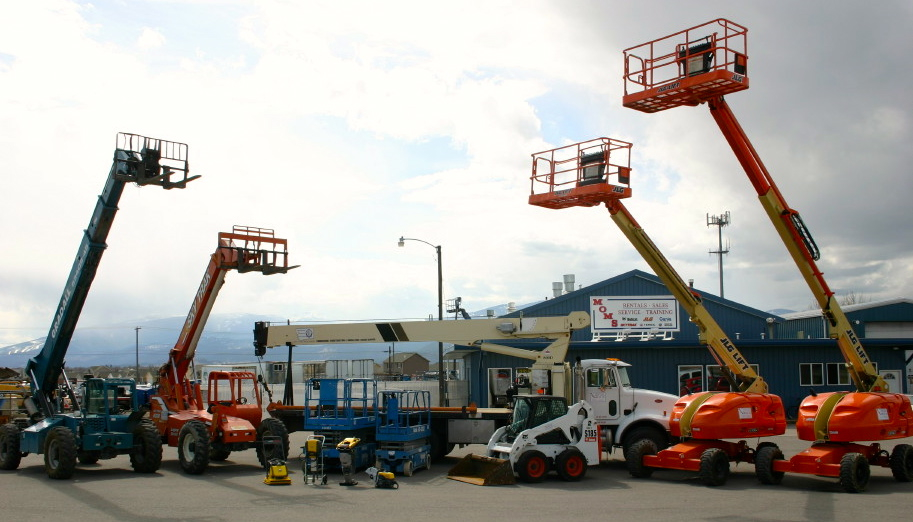Forklift Rental: Heavy Lifting Equipment for Warehousing and More
Forklift Rental: Heavy Lifting Equipment for Warehousing and More
Blog Article
Maximize Your Spending Plan by Recognizing the Expenses Associated With Construction Equipment Services
Understanding the complete scope of prices associated with building equipment rentals is vital for optimizing your budget plan. What approaches can be utilized to efficiently manage these costs and ensure an extra reliable rental experience?
Review of Rental Expenses
When considering construction tools leasings, recognizing the connected expenses is critical for efficient budgeting and task preparation. Rental prices can differ considerably based upon several elements, including tools kind, period of leasing, and location. The first rental charge frequently mirrors the devices's market demand and its associated functional capacities, influencing the total expenditure.
Along with the base rental price, secondary costs may arise, such as transportation costs, gas surcharges, and maintenance fees. It is necessary to make up these extra costs to properly examine the overall price of renting tools. The rental period can impact pricing; longer rentals may certify for affordable rates, while short-term services may incur higher everyday charges.

Malfunction of Rental Prices
A thorough understanding of rental rates is necessary for service providers and task managers aiming to maximize their spending plans. Rental rates for building devices generally contain a number of components, consisting of base rates, time-based fees, and usage costs.
Base rates are the core charges connected with the leasing of the devices, commonly figured out by the type and dimension of the machinery. These prices can differ significantly, influenced by factors such as equipment need, availability, and regional market trends. Time-based charges, which might be daily, weekly, or monthly, serve to suit different job timelines and rental periods.
In addition, rental prices might consist of usage costs, which are applicable when devices is utilized beyond a defined threshold, ensuring that the rental company can represent wear and tear. Seasonal demand variations can additionally affect rental rates, with peak building periods normally regulating higher prices.
In addition, recognizing the rental firm's plans relating to upkeep and insurance coverage can give more understanding right into the overall cost framework. By evaluating these elements, service providers can make informed decisions, making sure the option of rental tools lines up with both task demands and budget plan restrictions.
Extra Costs to Consider
Recognizing the ins and outs of added costs is crucial for specialists to handle their total rental costs properly. Past the basic rental prices, different additional fees can substantially impact the total expense of equipment rental. These charges frequently consist of delivery and pickup charges, which can differ based upon range and logistics associated with delivering the tools to and from the task site.
Additionally, some rental companies might impose gas surcharges if the devices is returned with less gas than when rented out. It is additionally important to know possible cleansing costs, especially for specific equipment that requires comprehensive upkeep after use.

Thoroughly evaluating the rental arrangement and making clear these additional costs upfront can aid contractors guarantee and stay clear of unanticipated expenses that budget plans remain intact throughout the project lifecycle.
Maintenance and Fixing Expenditures
Normal maintenance and repair costs are often overlooked variables that can considerably influence the total cost of construction equipment leasings. When renting out devices, it is crucial to consider not just the rental costs but additionally the potential costs connected with keeping the equipment in optimal operating condition.
Lots of rental companies consist of basic upkeep as part of the rental contract; however, more unanticipated breakdowns or comprehensive repair work can bring about added costs. It's important to examine the rental agreement thoroughly to comprehend what maintenance solutions are covered and what duties fall on the occupant.
Furthermore, devices that is not well-maintained can cause inadequacies at work site, possibly triggering hold-ups Recommended Reading and raising task prices. To mitigate these risks, it is advisable to carry out regular inspections and keep open interaction with the rental supplier regarding any concerns that develop throughout use.
Insurance Coverage and Obligation Costs
Insurance and obligation costs are critical elements that can dramatically influence the total expense of building and construction devices leasings (aerial lift rental). These expenses guarantee that both the rental company and the client are shielded from potential economic losses occurring from crashes, damage, or burglary throughout the rental period

Furthermore, clients ought to know pt backhoe any deductibles or exclusions in the insurance plan, as these can affect potential out-of-pocket costs. Comprehending the terms of any type of insurance coverage is important to prevent unanticipated expenses. Eventually, budgeting for insurance coverage and responsibility costs can help guarantee a smoother rental experience and secure against financial risks related to building and construction tasks.
Conclusion
In conclusion, a comprehensive understanding of the expenses associated with building and construction devices rentals is vital for efficient budget administration. Ultimately, informed decision-making pertaining to devices leasings adds to the overall success of building and construction endeavors.
Rental expenses can differ dramatically based on a number of elements, consisting of devices type, duration of rental, and place (rental company near me). The rental period can influence rates; longer services may qualify for discounted prices, while short-term services may incur greater day-to-day fees
By performing thorough study and engaging with reliable rental companies, service providers can effectively navigate the intricacies of rental prices, inevitably optimizing their financial sources.
Past the typical rental rates, numerous supplemental costs can considerably influence the overall price of devices rental. Rental companies frequently offer liability insurance coverage that covers injuries to third events or damages to residential property, while devices damages insurance policy can cover the cost of fixings or replacement if the rented out devices is damaged.
Report this page